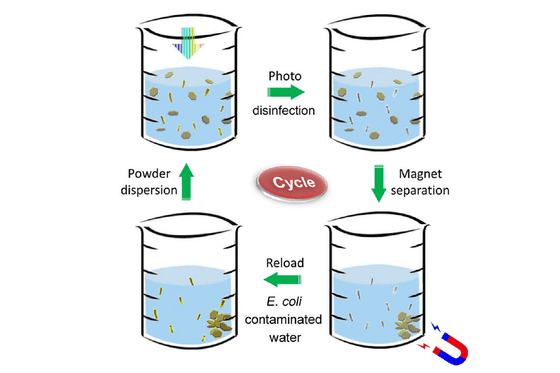A revolutionary progress that saves 30% of the world's population by creating an ultra-fast disinfectant that uses sunlight to quickly turn contaminated water into drinking water

Scientists at Stanford University and the SLAC National Accelerator Laboratory have developed a disinfectant that uses solar energy to kill bacteria that cause water-borne infections. This low-cost, recyclable disinfectant has the potential to help the two billion people without access to safe drinking water.
Solar-driven efficient heterogeneous subminute water disinfection nanosystem assembled with fingerprint MoS2 | Nature Water

New technology uses ordinary sunlight to disinfect drinking water | Stanford News

Techniques for disinfecting water include methods using chemicals that produce toxic by-products, and methods using ultraviolet light, which is relatively slow and power-intensive.
Scientists at Stanford University and the SLAC National Accelerator Laboratory have developed a new method using harmless metal powders.
The powder consists of aluminum oxide, molybdenum sulfide, copper and iron oxide and works by absorbing both ultraviolet and visible light from the sun. According to Yi Cui, one of the authors of the paper, the materials are small, inexpensive, and not rare.
When this powder is mixed with water and exposed to sunlight,
On the other hand, hydrogen peroxide and hydroxyl radicals are decomposed into water and oxygen and disappear in seconds if no oxidizing bacteria are found.

According to Bofei Liu, co-author of the paper, on the campus of Stanford University, when the powder was actually mixed with contaminated water and exposed to sunlight, the bacteria died within 60 seconds.
In addition, the powder after being used for sterilization can be collected with an ordinary magnet. In fact, by collecting the same powder many times, 30 different samples of contaminated water were processed.
This powder may also be useful in wastewater treatment plants that disinfect with UV lamps. Cui, who was involved in the research, said that using sunlight during the day works faster than UV light and saves energy. Also, the powder itself can be easily made, and it seems that it can be scaled up in units of 1 ton.
In the future, the research team plans to test the new powder against other water-borne pathogens such as viruses, protozoa and parasites.
Related Posts:
in Science, Posted by logc_nt







